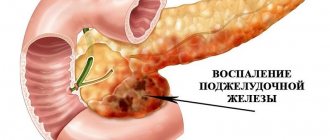“Mom, my stomach hurts!” – one of the most common complaints of children at any age. Babies who have not yet mastered speech skills express pain by crying, whining, and bending their knees to their chest. Unfortunately, often mothers, without understanding the causes of the disease, simply stuff their children with analgesics and antispasmodics.
Discomfort and pain in the abdomen are a serious signal from a fragile child’s body that it needs help. The pain can be caused by simple indigestion, or it can be one of the manifestations of a serious illness that requires prompt medical attention. Therefore, it is so important to be able to carry out an initial diagnosis in a timely manner and alleviate (and not harm!) the child’s condition before the doctors arrive.
Remember that severe abdominal pain is a reason to consult a doctor immediately!
Causes of vomiting and abdominal pain in a child
When a baby has a stomach ache, nausea, vomiting, there is an infection or food toxin in the body. Factors in the development of common signs of diseases are:
- Acute respiratory viral infection (including intestinal flu);
- Acute intestinal infection;
- Gastritis;
- Cholecystitis;
- Inflammation of the appendix;
- Ulcer in the stomach;
- Intestinal obstruction.
An experienced medical professional will help you understand what causes discomfort to the child, provokes vomiting, or stomach cramps. It is impossible to delay diagnosis and treatment.
A respiratory viral infection enters the body orally (through kissing), through airborne droplets, or after touching contaminated objects with subsequent transfer of the virus to the mucous membrane. The susceptibility of children to ARVI is higher than that of adults due to reduced immunity. The disease begins in an acute form with an intense runny nose and cough. Rising temperature and headache aggravate the condition. The baby complains that his stomach hurts and he feels nauseous. Single vomiting is provoked by fever.
The pediatrician will prescribe an antipyretic, immunomodulator, and antiviral agent. The cause of the gag reflex is neutralized by antiemetic drugs. For respiratory infections, drinking plenty of fluids, limiting food and complete rest is recommended.
Rotavirus infection
Intestinal flu is common in children. The causative agents of rotavirus infection are brought by a daughter or son from a kindergarten, school, or section. The younger the patient is, the more severe the symptoms of the disease are tolerable. Pathogenic microorganisms immediately affect the intestinal mucosa. The amount of pathogen and the state of immunity affects the rate of development of the disease in the child.
It begins like a typical flu - runny nose, sore throat, cough. Signs of a cold disappear, and dyspepsia (bloating) occurs. This distinguishes intestinal flu from gastrointestinal diseases that are periodically accompanied by diarrhea. Specific factors of infection:
- Throat hyperemia;
- Mild rhinitis, cough;
- Stomach growls and hurts;
- Diarrhea with copious discharge of masses of clay-like consistency with a pungent odor up to ten times a day;
- Nausea, repeated vomiting;
- Low-grade or elevated temperature;
- Decreased mood, weakness.
Younger age and a weakened immune system delay recovery. In severe cases, babies develop renal failure, dehydration, and hemodynamic changes. A parent can avoid negative consequences after suffering a pathology by strictly following the doctor’s recommendations. Manifestations of the disease are similar to salmonellosis, dysentery, and food poisoning. To exclude serious illnesses, the doctor prescribes additional tests. Timely treatment will help avoid complications.
Acute intestinal infection
This disease is interpreted as food poisoning or foodborne illness. Food contaminated with pathogenic microflora disrupts the functionality of digestion and provokes the development of the following symptoms:
- Nausea, vomiting;
- Increased body temperature;
- Diarrhea;
- Abdominal colic;
- Loss of moisture from the body, leading to dry skin.
Course of the disease
The passage of vomit brings short-term relief to the little person. Diarrhea is accompanied by repeated urges. Frequent bowel movements aggravate severe pain in the abdominal cavity. Losing a significant amount of fluid dehydrates the body. The temperature rises, the baby becomes lethargic and apathetic. Lost appetite.
Rinsing will help in case of poisoning if toxins enter the stomach. A salt solution (a tablespoon per liter of boiled water at room temperature) will help with washing the stomach of older children. Mild poisoning resolves by inducing vomiting by applying pressure to the root of the tongue.
A rehydron solution taken in small sips will help save a child from dehydration. Absorbing drugs are taken after vomiting to quickly remove toxins from the body. The doctor prescribes intestinal bactericides and probiotic preparations.
What should you eat if your stomach is gurgling or rumbling?
People often think that the causes of stomach rumbling are certain foods that are included in their diet. To reduce gurgling in the abdominal cavity, you should reduce your consumption of the following foods: rye bread, cabbage dishes, grapes, legumes, canned pickles, fried, smoked, hot spices.
Low-quality drinks with a high content of preservatives, dyes and gas can cause gurgling in the stomach and rumbling in the gastrointestinal tract. We are talking about beer, sweet carbonated drinks, artificial juices. Caffeine, which is found in foods such as coffee, chocolates, and black tea, causes excessive gas in the intestines.
One of the reasons for gurgling and rumbling in the stomach can be helminths. The presence of some types of parasites in the body is considered by many to be a normal state. As a result, only a doctor can determine the need for treatment based on the tests performed. The position of the body has a certain significance in the appearance and intensification of rumbling in the abdominal cavity. It happens that when standing or sitting, no sounds come from the stomach, however, as soon as you lie on your back, the rumbling begins to arise, sometimes so intense that you can’t even fall asleep.
Intestinal obstruction
Obstruction occurs in any part of the small or large intestine as a violation of intrauterine development. Difficulty in the movement of digested food, as well as complete blockade, occurs after severe blockage of the intestinal lumen or inflammation of the mucous wall.
Signs of intestinal obstruction:
- Prolonged absence or delay in bowel movements;
- Painful, tight belly;
- Persistent nausea, vomiting without improvement;
- Nervous overexcitation causing insomnia;
- Mucus and bloody discharge during bowel movements.
The pathology occurs without fever. Eliminated by surgery if conservative treatment (lavage, administration of hypertonic fluids) does not work.
Inflammatory diseases of the gastrointestinal tract
Among the inflammatory processes of the digestive tract in children, acute inflammation of the appendix, stomach or gall bladder, and gastric ulcer may occur.
Acute appendicitis
Inflammation of the vermiform branch of the cecum occurs at any age. The younger the child is, the more difficult it is for him to describe sensations. The pain first appears in the gastric region, then migrates to the right side to the ilium. The painful feeling constantly intensifies as the disease progresses and causes anxiety when moving, coughing, or turning the body.
The main signs of acute appendicitis:
- Low-grade fever, temperature rise to 37-38 degrees;
- Abdominal pain radiating to the back;
- Dryness of the oral mucosa;
- Nausea, without relief by vomiting;
- Loose stools. Children experience difficulty passing urine due to irritation of the bladder by the appendix.
How to help your baby?
The most important question that haunts young parents when they see their baby suffering is what to do? It is necessary to start with organization-wide activities that require only the mother’s attention and virtually no financial costs. These include:
- feeding at the baby’s request, and not according to a schedule convenient for the mother (a small amount of milk is easier for the baby’s digestive tract to digest);
- after finishing feeding, you need to hold the baby in an upright position so that excess air comes out of the stomach and does not provoke colic and rumbling;
- The diet of a nursing mother should be quite dietary; a variety of semi-finished products, spices, and legumes should be excluded;
- If necessary, offer the baby dill water or fennel tea;
- Under no circumstances should you give your baby juices or other complementary feeding options.
Dr. Komarovsky, in his recommendations, insists on the need for a minimum amount of medications and maximum peace of mind for parents. Usually, the above points are enough for the digestion process to improve in a small child on natural or mixed feeding by 2-3 months of age.
If the anxiety continues, then it is important to figure out why the baby’s tummy is rumbling, as it may be lactase deficiency. The deficiency of the enzyme does not disappear with age, so it is necessary to exclude milk sugar from the child’s diet - switch to special milk formulas. A final diagnosis requires consultation with a specialist and laboratory examination.
If the baby does not have a fever and there is age-appropriate weight gain, then colic and rumbling will disappear as they grow and without any treatment.
Causes of abdominal pain in infants
Help before the doctor arrives
There are many factors for the development of abdominal pain in children under one year of age and older - nervous shock, viruses, bacteria. Self-treatment is not encouraged. It is important to provide first aid before the ambulance arrives or a visit to the pediatrician.
If the above signs of disease are detected, an ambulance is called. The operator is told the root of the complaints, the location of the pain, the presence of fever, nausea with or without vomiting. Children usually hold the sore spot with their hands. It will be easier for the doctor to perform manipulations if he knows about the presence of chronic pathologies.
What is prohibited and allowed:
- Self-medication.
- Warming or cooling the abdomen.
- Gastric lavage.
- Taking food and medications.
If the pain is unbearable, you can take a no-shpa tablet. The child is laid horizontally with the head of the bed raised. Intense fever can be treated with an antipyretic. You can maintain water balance in the body by taking fractional intakes of water, rehydron, or rice water. It is important to support the offspring until the doctor arrives, without destroying the symptoms of the disease.
Under the term “ flatulence”
* understand the excessive formation of gases and their accumulation in the intestines. Parents pay attention to the rumbling in the child’s stomach, the release of a large amount of gases (flatulence). Excessive formation of intestinal gases may be associated with nutritional reasons (consumption of products that promote gas formation, such as cabbage, legumes, whole cow's milk, etc.), with disruption of their absorption processes in the intestines (malabsorption syndrome, colitis, liver cirrhosis, etc.).
Flatulence
one of the important symptoms of intestinal dysbiocenosis, which occurs when a number of pathogenic microorganisms produce their metabolic products, during various processes of fermentation and putrefaction. An experienced doctor, by the smell of intestinal gases, in some cases can suggest the correct diagnosis, especially in the case of malabsorption syndrome.
Odynophagy
. This term refers to painful swallowing or pain as food passes through the esophagus, often occurring in association with dysphagia. Odynophagia is a sign of inflammation in candidiasis or herpetic esophagitis, ulcerative reflux esophagitis, chemical or mechanical damage to the organ.
Belching
. In some cases, belching is physiological and is aimed at reducing intragastric pressure after a heavy meal or drinking carbonated drinks. It usually occurs spontaneously 5-10 minutes after eating. In children of the first year of life, when breastfeeding or through a nipple, excessive swallowing of air (aerophagia) often occurs. With aerophagia, air mainly collects in the esophagus rather than in the stomach and the belching is esophageal.
Persistent
, and sometimes obsessive, belching is a symptom of damage to the esophagus and stomach (cardia insufficiency, hiatal hernia, gastric pneumatoe, gastroduodenitis, peptic ulcer, mapabsorption syndrome, intestinal dysbacteriosis). Belching can be sour when there is increased acid production in the stomach or due to increased fermentation processes. Bitter, unpleasant belching is observed when bile flows into the oral cavity (duodenolingual reflux). A putrid odor is characteristic of belching that occurs with stenosis, obstruction of the esophagus, cardia, stomach or duodenum and is explained by the decomposition of food debris.
Vomit
is a complex neuro-reflex act. Emptying of the stomach and the initial part of the small intestine occurs due to repeated jerky contractions of the muscles of the diaphragm, stomach and anterior abdominal wall
Physiological gag reflex
occurs when the mucous membrane of the pharynx, root of the tongue, or stomach is irritated (in case of intolerance to any substances or in case of overflow). Under pathological conditions, the gag reflex appears when the vestibular apparatus, nuclear centers of the medulla oblongata are irritated, and in pathology of the upper digestive tract by toxins and metabolic products circulating in the blood. According to the mechanism of occurrence, vomiting can be of central origin (the irritant acts directly on the vomiting center) or peripheral (irritation is transmitted through nerve connections to the center).
First aid for rumbling stomach
It is important to understand not only why a baby’s stomach growls during and after feeding, but also how to help him cope with this problem. A heat compress can be used to relieve and eliminate colic. To do this, soft fabric is heated with an iron, applied to the tummy, and then the baby’s legs are pressed to the chest. The procedure helps the child calm down and fall asleep.
The child should often be placed on his tummy, special gymnastics should be done with him, and he should walk around the room with the baby in his arms, where there should be dim lighting and soothing music, which has a good effect on the nervous system. In the evening, you can give your baby a small massage on the back or tummy with light massaging movements in a clockwise direction, without pressing too hard. Movements in the navel area should be especially careful.
It is also recommended to rhythmically bend and straighten the legs, as this helps food pass into the small intestine much faster. If all these remedies do not help, then you can prepare dill water or chamomile infusion for your child. In exceptional cases, use a gas outlet tube.
Diseases by symptoms
Any symptom is a signal from the body that any organ, department or entire system is damaged. To find out why rumbling in the stomach occurs in children, you need to rule out some diseases. Make sure that your child undergoes timely diagnosis, check with doctors about the cause of rumbling in the stomach and how to quickly and effectively improve his condition.
Rumbling in the stomach in children can occur for various reasons, including:
- hunger;
- binge eating;
- eating inappropriate foods, that is, an unbalanced diet;
- severe anxiety, causing increased irritability of the intestines;
- change of body position;
- dysbacteriosis;
- chronic gastritis;
- colitis;
- infections of the bile ducts and gastrointestinal tract.
If rumbling in a child’s stomach occurs regularly, it is better to show it to a doctor, since this symptom may be caused not by physiological, but by pathological reasons.
Causes of stomach turmoil
At the first stage, you should figure out why the baby’s stomach is bubbling? Parents must understand that the human digestive system works around the clock. Its functioning is also characterized by systematicity. Juices that are part of the mucous membrane are constantly secreted in the stomach and intestines. The process is carried out even if there is no food in the system. The muscle fiber still continues to contract rhythmically.
If a baby's stomach is seething, then perhaps air has simply entered the intestines and is trying to escape. Gastric juice mixes with gases. Against this background, parents may hear unusual sounds from the baby.
In an adult, there may be no rumbling in the stomach at all. When food enters his stomach, it spreads along the walls. This is why the organ cannot reproduce unusual sounds that may occur in a child.
If some strange sounds regularly occur in your newborn’s stomach, you should immediately contact your doctor. He will conduct a diagnosis and rule out the presence of pathology. In case of illness, early diagnosis is useful. This will help avoid serious consequences in the future.
Immediately after birth, children's tummy rumbles due to underdevelopment of the microflora and the enzyme component of the stomach and intestines. Additionally, it should be noted that peristalsis cannot yet work progressively. Against this background, quite often the baby experiences various spasms.
Abdominal colic in a baby causes him and his parents a lot of discomfort. Against this background, the child begins to writhe, strain and twist. The manifestation is aggravated by crying and grunting. Parents should ask their pediatrician what to do in this situation. It is important to stop the pain of a newborn in time. Otherwise, the risk of worsening the situation increases.
Additionally, it should be noted that colic quite often occurs in a child at night. Against this background, the whole family may not get enough sleep, because the baby becomes overly whiny and irritable. At this moment, the newborn’s tummy is also seething, because the gases cannot get out.
Quite often, a child's tummy rumbles due to excessive gas formation.
This clinical picture develops against the background of the negative influence of the following factors:
We recommend reading: Vomiting in a baby after feeding
- Immediately after birth, the child has no intestinal microflora. The organ continues to be populated with bacteria necessary for digestion. Against this background, dysbacteriosis quite often occurs. When a child is fed with mother's milk, such a manifestation is observed if the woman does not comply with the diet. The manifestation only gets worse when switching to an artificial feeding option.
- The cause of indigestion may lie in non-compliance with the diet during lactation. During this period, a woman should completely exclude legumes, sweets and fruits from her diet. A mixture that is not suitable for the baby’s intestines can also play a negative role. In this case, the body will instantly react in the form of a loud rumbling sound. We should not forget that such a manifestation causes a lot of pain in the child.
- Against the background of seething, the baby may experience severe spasms, which lead to painful sensations.
- With dysbacteriosis, after feeding, the child develops loose stools with foam. Parents will be able to notice that an unpleasant odor emanates from it, which hits the nose sharply.
Laying on the stomach helps the natural waste of gases











